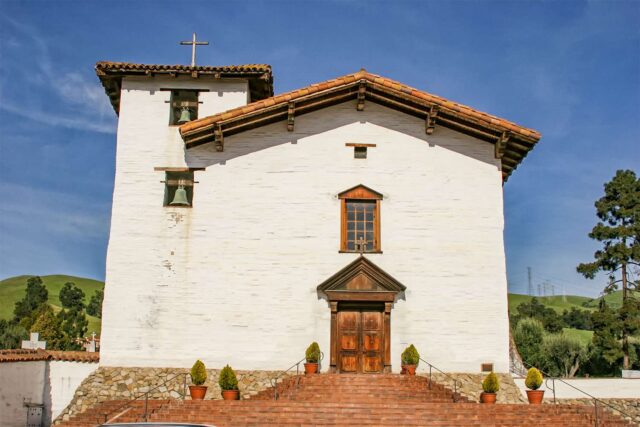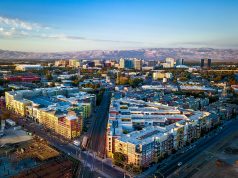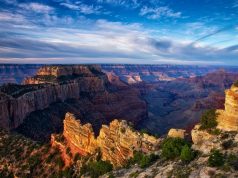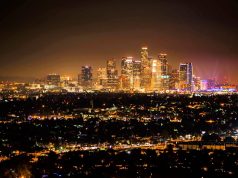
The California mission system is perhaps the best known survivor of the Spanish period of the state’s history. However in retrospect, few people know the names and locations of all twenty-one of them. Of course there are the well known ones like those in Carmel and San Francisco, but what about the others?
Tucked away in the city of Fremont stands one of these lesser known missions — Mission San Jose.
The 14th of a total twenty-one missions in California, La Mision del Gloriosisimo Patriarch San Jose was founded on June 11, 1797 by Father Fermin Francisco de Lausen near the Ohlone village of Oroysom. Today, Mission San Jose is both a California and National Registered Historic Landmark.
To visit the mission, you must enter through the gift shop. This is the building next door to the chapel and is marked by several flags, each representing if different era of the mission’s history. It is open every day from 10:00 a.m. to 5:00 p.m. and general admission costs only three dollars, but students may enter for only two.
Once inside, the first place you should visit is the mission museum located in the same building as the gift shop. Made up of several adjoining rooms, you will find artifacts from the various periods of the mission from the Native Americans to the rancheros and ending with the church’s restoration. Do note, however, that doorways with-in the museum are short so taller visitors should watch their heads and be prepared to duck while passing from room to room.
Leaving the museum building, you will next pass through the garden before entering the church. The first thing you will see is a large taped off section which protected the foundation and ruins that once were part of the church. Other sights in the garden are several graves and monuments, a large fountain as a centerpiece, and the customary statue honoring Father Junipero Serra. Crossing the garden, you will enter into the mission’s church.
While Mission San Jose was founded in 1797, the church itself was not completed here until 1809. Unfortunately, the original adobe structure was destroyed by an earthquake in 1868. A wooden church would take its place until 1985 when the current adobe church was rebuilt and restored.
Buried beneath the church, as a plaque inside notes, are the final resting places of numerous prominent individuals of the region. Among them is Don Ygnacio Martinez. A former officer of the Spanish Army, Martinez served as commandante of the Presidio of San Francisco during the 1820’s as well as Alcalde of San Francisco in 1837. Today he is best immortalized by the city of Martinez, which is named in his honor.
Of all those buried beneath the church, only the grave of Robert Livermore is marked. A native of England.
Livermore came to California in 1822 and was, as a memorial cenotaph in the cemetery notes, the first Anglo-Saxon settler of the Livermore Valley. Today, he too is immortalized in the form of the nearby city of Livermore.
Exiting through the door on the left side of the church takes you into the old mission cemetery. In this cemetery are the graves of many pioneers of the region from the Mexican, Spanish, and later periods. As many of the markers have become fragile over the years, please treat the area with the respect it deserves.
In addition to the mission cemetery, many of the Ohlones who once lived here were allowed to be buried at their home village, as was their custom. The burial ground would remain in the control of the Catholic Church until 1965 when it was returned to the Ohlone tribe. Today, the Ohlone Cemetery is not accessible to the public but you can still drive past the site on Washington Blvd in Fremont.
In order to exit the mission, you must once again pass through the museum gift shop. From here you can purchase a wide variety of religious and historical items.
Mission San Jose stands as a landmark honoring many groups of people who all played an important role in the development of the region. It also provides a rare chance to go back to an early period in California’s history. As a result, it is a great place to visit if you’re someone who wants to learn about California history or just someone who wants to see what life was once like.









